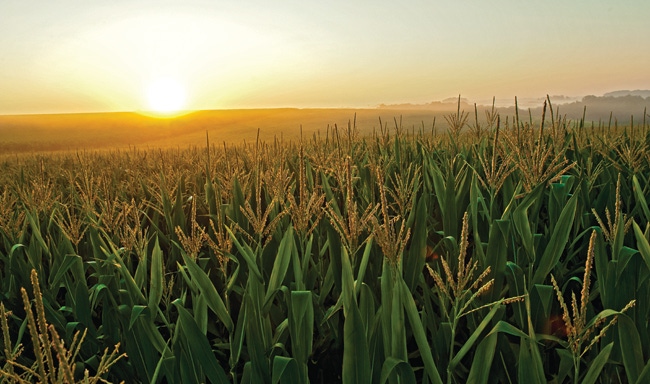September 24, 2012

As U.S. corn producers continue the push toward more and more corn acres — surpassing 96 million acres in 2012 — the pressure on the entire production system has mounted exponentially. Nowhere is that pressure felt more than at the beginning of the corn cycle — growing hybrid corn seed.
“Seed demand [for 2012] has been nothing short of phenomenal,” says Don Hartung, vice president of Hartung Brothers, a contract producer of hybrid seed corn. Sitting in his Madison, Wis., office in early May, Hartung is just wrapping up 2012 sales as the 2013 production crop gets into the ground. “The overall need for seed corn is increasing the demand on the entire market, from quality land, to good employees to production facilities,” he says.
A combination of factors has pushed the seed corn market into somewhat uncharted territories, where suppliers and growers work to satisfy the ever-growing demand for quality hybrid corn seed. And demand is not expected to subside anytime soon.
“The past three years has seen quite a change from the previous decade,” explains Joel Francque, production area supervisor for Wyffels Hybrids. “We went through a period in the early 2000s where traits were still evolving and the industry as a whole kept working to have enough of the right traits ready to sell.”
That, in turn, built seed corn inventories as newer traits and trait packages were being rolled out almost on a yearly basis. “So there was a stretch of several years where we all tried to pare down our inventories so when the next new trait comes along we’re not holding a lot of obsolete inventory,” Francque says.
At the same time, seed corn producers had several back-to-back years of good growing conditions, which further increased inventory.
But since 2009, production has not been as robust. “Combined, total inventory was fairly empty even in 2010, and since then it’s been difficult to catch up,” Francque says. While a significant amount of seed corn acreage is under irrigation, producers are somewhat concerned that the 2012 seed crop’s production may be under stress as well.
“Back 20 years ago we would raise the same hybrids five years in a row,” Hartung says. “Now, if we see the same number two years in a row it must be one heck of a hybrid. With all these fast changes to traits and hybrid packages, the industry doesn’t want to hold on to old products that no one wants to buy.”
Wanted: Good ground
Before a single acre of seed corn is planted, companies must ensure they have secured quality farmland to grow the crop. Because many growers have long-standing working relationships with the seed companies, the challenge hasn’t necessarily been companies battling companies for a piece of ground. It’s been the underlying commodity market.
“Certainly seed companies compete for acreage,” says Dan Case, supply planning manager for DuPont Pioneer. “Often a lot of the major players are in some of the same geographies. But the biggest competitor, especially when corn prices are high, is commodity corn. We have to pay for the underlying commodity plus an incentive to produce the seed.”
For the producer, the complexities are significant. Corn inbreds are often planted in multiple stages, at designated intervals, to ensure proper pollination and to spread out the time between jobs such as detasseling and harvest.
“We target reliable farmers who produce high-yielding, high-quality crops,” says Shawn Schrader, Monsanto North American corn manufacturing lead. “But with the overall rise in commodity prices, we have had additional challenges in securing these areas as farmer interest has shifted to other crops that can achieve a higher return to their operation.”
Good seed corn ground, which is often irrigated, is also highly sought-after land for commercial production of not only corn, but other crops as well. “Some of our best irrigated ground competes directly with vegetable producers,” Hartung says.
“Seed corn is a specialty product, and you can’t plant 500 acres in a day,” he says. “There is a large tier of very good growers who will not slow their pace to plant seed corn.”
Production complexity
The explosion in corn hybrid trait packages has brought a significant change for the entire seed corn production system. “In 1992, we grew eight different hybrids,” Francque says. “Today we are growing 52 different hybrids. That means more time management, labor and increased risk.”
Producers benefit from the increased options of what they can plant, but ensuring that enough of a certain hybrid is grown to meet an ever-changing market demand can wreak havoc on the best of plans.
“We have ample risk management built into sales,” Case says. “And we make sure we have the right capacities in place through the whole process, from the field level all the way through bringing the crop into the plant, packaging and distribution.”
Planning more than a year out for a product that may or may not be in high demand is perhaps one of the most difficult aspects of seed corn production. “We work closely with our field sales professionals to determine what products may ultimately be demanded and in what trait packages,” Case says. “Making a forecast more than a year before the actual seed is purchased is certainly a challenge.”
The planning process is a year-round operation and starts well before seed corn is even planted. Companies must secure the parent inbred seed lines well in advance, with specific traits and genetics. “We’re not only looking out the next six to 12 months, we look out five years and beyond to ensure there’s enough parent seed in place, assets are in place to produce the seed, and we have the ability to deliver the product,” Case says.
Weather
“Parent seed and inbreds are just not as resilient as a hybrid,” Francque says. “If the weather is bad for commercial corn production, you can multiply its impact by a factor of five for seed corn production.” Weather is a concern for every farmer, but it’s magnified in the seed business.
“Seed corn producers face similar issues as other farmers,” Schrader says. “Because hybrid seed production involves crossing two seed parents, the impact of inclement weather can be exacerbated in the production process. Frost or rain during the spring can affect planting; hail, wind and high heat during the growing season can damage the crop or have a negative impact on pollination; and harvest can be impacted by rain or an early frost.”
While companies search for irrigated land and spread production over a wide geographical area to mitigate some of the weather risks, an untimely heat wave during pollination, or a hailstorm in one area, can significantly impact next year’s production.
Detasseling can be perhaps the busiest time for seed corn producers, but perhaps the most critical and most stressful time is the key pollination period. Hot weather, or a dry spell, at the wrong time can spell disaster for the seed corn crop. “Heat is no friend to pollination,” Hartung says. “And a few hot days can hammer your seed corn yield.”
Late in 2011, when reports of less-than-stellar seed corn estimates began to appear, that set in motion another round of what has become more commonplace in the industry: off-season production. Whether it is to produce a particular new hybrid, or increase production of a hybrid where inventory is short, South America, in particular, has become the go-to spot for companies.
“We have always had a modest winter plan that offers an opportunity to make minor adjustments to the total plan, if needed, and allows us to continue to bring the highest-yielding products to our customers,” Schrader says. “We also have the capability to utilize this winter production capacity to a greater extent if supply conditions warrant additional production in order to meet customer needs.”
But planting in South America also comes with its own weather risks, plus the significant expense of shipping seed back to the United States in time for spring planting.
Hartung expects business to remain brisk, and stressful. “As demand remains strong for corn acres, we will continue to be under pressure to deliver,” he says. “And it will remain a nerve-racking business.”
About the Author(s)
You May Also Like






